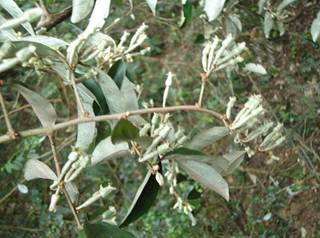"International Journal of Mosquito Research"
Vol-1, Issue-4
Chemical composition and larvicidal activity of
Elaeagnus indica Servett. (Elaeagnaceae) plant
leaf extracts against dengue and malaria vectors
Authors:Ramalingam Srinivasan, Devarajan Natarajan, Sengodan Karthi,
Muthugounder S Shivakumar
MMosquito control is facing a threat due to the emergence of resistance to synthetic insecticides. Insecticides of botanical origin may serve as suitable alternative biocontrol techniques in the future. The acetone, chloroform, ethyl acetate, hexane, methanol and petroleum benzene leaf extracts of E. indica were tested against fourth instar larvae of malaria vector, Anopheles stephensi and dengue vector, Aedes aegypti. The larval mortality was observed after 24 h of exposure. Highest larval mortality was found in acetone leaf extracts against A. aegypti (LC50 and LC90 values of 2.97027and 5.9820 mg/ml) and A. stephensi (LC50 and LC90 values of 3.92501 and 68.3250 mg/ml) respectively. GC-MS analysis of plant extracts of acetone solvent revealed 19 compounds, of which the major compounds were -Thujone 1-Isopropyl-4-Methylbicyclo(3.1.0)Hexan-3-One 1- (6.71%), 1,6- Cyclodecadiene, 1-Methyl-5-Methylene-8-(1-Methylethyl)-, [S-(E,E)]-Germacra-1(10),4(15),5-Trie N (3.11%), L-(+)-Ascorbic Acid 2,6-Dihexadecanoate (4.06%), 2-Cyclohexylcyclohexanol [1,1'-Bicyclohexyl]-2-Ol (3.16%), Dotriacontane N- Bicetyl (58.7%) and Tetrapentacontane (3.85%). E. indica offers promise as potential biocontrol agent against major dengue and malaria mosquitoes particularly in larvicidal effect. Our results shows acetone leaf extracts of E. indica have the potential to be used as an ideal eco-friendly approach for control of mosquito vectors.

Fig:Elaeagnus indica
Download Full Article: Click HereClick Heresee
